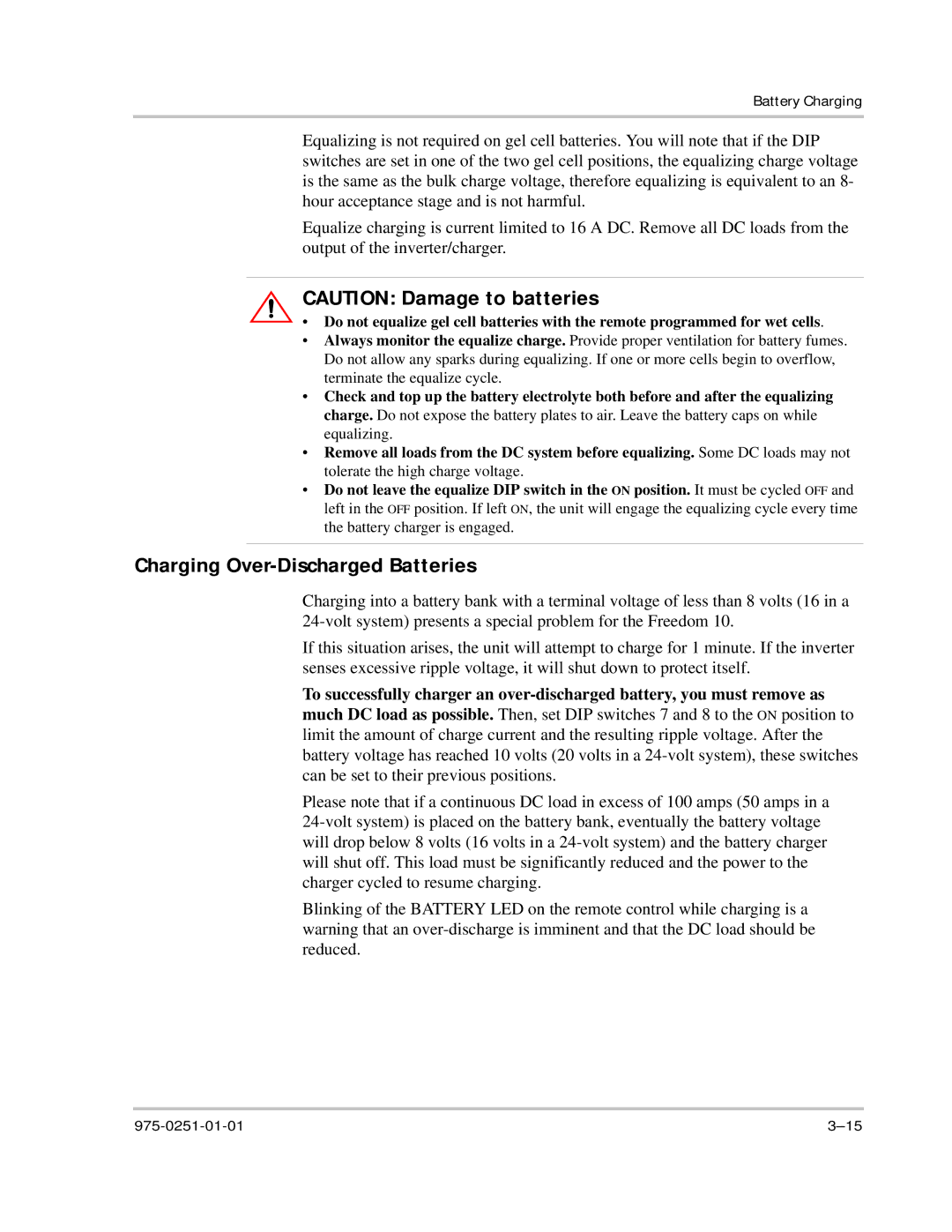
Battery Charging
Equalizing is not required on gel cell batteries. You will note that if the DIP switches are set in one of the two gel cell positions, the equalizing charge voltage is the same as the bulk charge voltage, therefore equalizing is equivalent to an 8- hour acceptance stage and is not harmful.
Equalize charging is current limited to 16 A DC. Remove all DC loads from the output of the inverter/charger.
CAUTION: Damage to batteries
• Do not equalize gel cell batteries with the remote programmed for wet cells.
•Always monitor the equalize charge. Provide proper ventilation for battery fumes. Do not allow any sparks during equalizing. If one or more cells begin to overflow, terminate the equalize cycle.
•Check and top up the battery electrolyte both before and after the equalizing charge. Do not expose the battery plates to air. Leave the battery caps on while equalizing.
•Remove all loads from the DC system before equalizing. Some DC loads may not tolerate the high charge voltage.
•Do not leave the equalize DIP switch in the ON position. It must be cycled OFF and left in the OFF position. If left ON, the unit will engage the equalizing cycle every time the battery charger is engaged.
Charging Over-Discharged Batteries
Charging into a battery bank with a terminal voltage of less than 8 volts (16 in a
If this situation arises, the unit will attempt to charge for 1 minute. If the inverter senses excessive ripple voltage, it will shut down to protect itself.
To successfully charger an
Please note that if a continuous DC load in excess of 100 amps (50 amps in a
Blinking of the BATTERY LED on the remote control while charging is a warning that an
